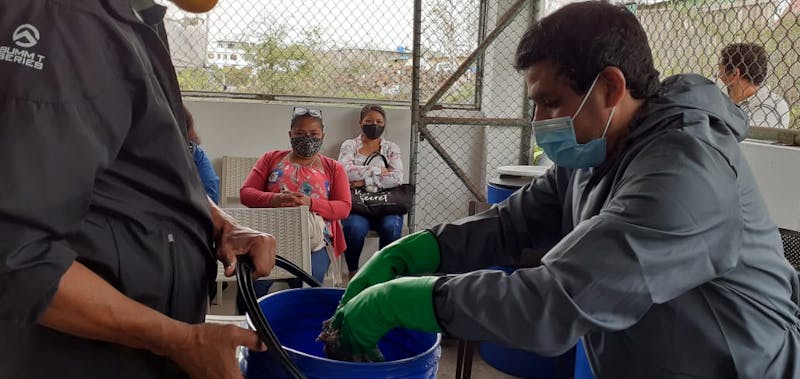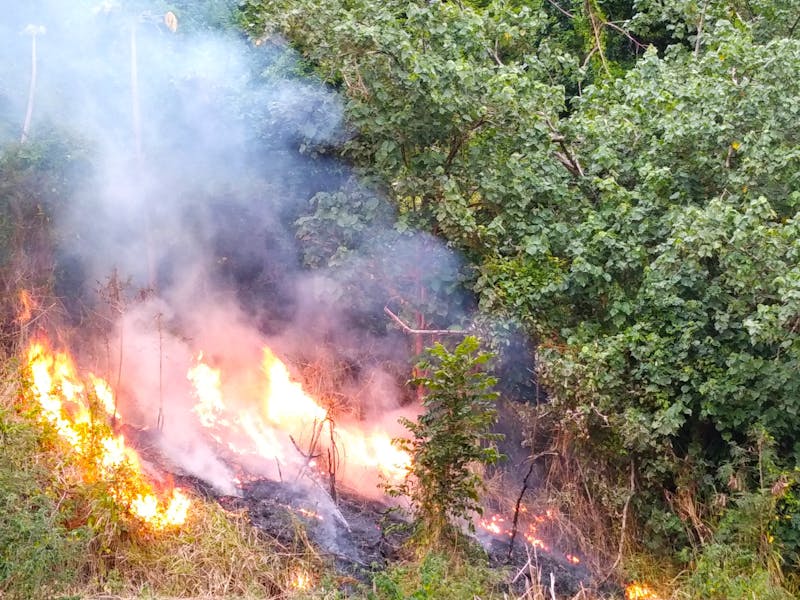Though news headlines about the state of the planet may seem bleak, they don’t always capture the whole story. Around the world, the work of protecting nature and the climate is happening in the field — and achieving triumphs that don’t always make the news.
Here are three recent conservation success stories you should know about.
1. From fisheries to farms – turning fish waste into fertilizer and feed in the Galápagos
Each week, local fisheries in the Galápagos generate approximately 4,500 pounds of fish processing waste — which is subsequently thrown into landfills. While this bio-waste is natural, when it is left to rot in landfills, it can emit methane and other climate-altering greenhouse gases.
To make better use of fish waste and curb its emissions, scientists at Conservation International came up with a solution: transform it into usable products like plant fertilizer and food for farm animals.
“Fish silage — that’s a fancy term for the liquified fish skin, heads and guts left after processing — contains organic matter, which is good for the soil, as well as different nutrients, such as calcium, that are not always present in industrial fertilizers,” said Pablo Obregon, a scientist at Conservation International.
“What we’re finding is that vegetables grown with this fish silage fertilizer are more productive and are actually sweeter and juicier than those produced using agrochemical fertilizer.”
Obregon and the Conservation International Ecuador team achieved these results through a series of agricultural trials at a local tomato farm. The team is also currently testing the use of fish silage as animal feed given its high protein content.
As this effort takes root, it could help reduce the polluting effects of fish waste in local landfills, while creating new jobs in communities that have been hard hit by the COVID-19 pandemic.
"It's a benefit to families in the fisheries sector, especially women,” said Amada Zapata, who is working with Conservation International to establish a new, woman-led company focused on commercializing fish silage in the Galápagos. “This is an entrepreneurial opportunity for us. It will be led by mothers and daughters of fishermen to utilize 100 percent of each fish."
A Conservation International Ecuador staff member working with fish silage in the Galápagos © Pablo Obregon
Like some other island communities, most of the food in the Galápagos is imported — a practice that has introduced several invasive species. The fish silage initiative could reduce the critical threat of invasive species to islands ecosystems by providing access to locally made fertilizer and animal feed.
“Galápagos has long been known as a living laboratory of evolution,” Obregon said. “It’s also a laboratory for sorting out how humanity can meet its needs while conserving the life support systems that nature provides. This program shows how we can reduce environmental impacts from human activities while creating new, good-paying jobs."
The initiative is being supported by the World Bank through the Coastal Fisheries Initiative - Challenge Fund (CFI-CF).
2. In New Caledonia, Indigenous knowledge points to natural fire-fighting solutions
In the heart of the Pacific, 1,448 kilometers (900 miles) from Australia, the archipelago of New Caledonia boasts the highest density of endemic plants anywhere in the world, with around 2,500 native species.
One of the country’s unique plants — known as the Bourao tree — may prove to be a secret weapon in halting dangerous bushfires that have recently ravaged this island chain.
“Each year, bushfires burn up to 2 percent of New Caledonia,” said François Tron, Conservation International’s New Caledonia program director. “And while fire has many traditional uses, uncontrolled burns have become more frequent and intense due to a number of factors, including climate change. This could have multiple and devastating consequences for local communities.”
For generations, New Caledonia’s Indigenous Kanak people recognized the Bourao tree’s ability to stop fire.
“When a moderate fire hits a dense bush of Bourao, the blaze itself also can’t make it through, which quite often stops the fire in its tracks and prevents it from spreading,” Tron said. “This is in part because of Bourao’s thick and large leaves, and the high humidity content of the bare soil around it. The plants certainly wither under the heat, but most of the time don’t really burn.”
A fire in New Caledonia © François Tron
As fires have raged across the island, local communities are looking beyond traditional fire-fighting approaches and seeking to tap into local knowledge.
“In New Caledonia, Indigenous Kanak peoples have 3,000 years-worth of traditional knowledge to contribute to climate change adaptation and mitigation,” Tron added. “This is just one example of the ways in which their knowledge can shape conservation strategies.”
Currently, Conservation International is working with local communities to pilot a program that would plant Bourao as green firebreaks in areas with high risk of fires, thus allowing the forest to naturally regenerate over large areas with only marginal human intervention. Beyond stemming fires, planting more of the species could also help provide shade, prevent soil erosion and supply fibers for ropemaking.
3. Ecuador expands marine reserve to protect threatened species
A vital swath of the Pacific Ocean has been declared off-limits from destructive fishing practices with the establishment of a new marine protected area that spans 60,000 square kilometers (23,166 square miles) — connecting the Galápagos Islands to Costa Rica’s Cocos Island National Park.
The new marine reserve will create an important corridor for migratory species such as whales, sharks, sea turtles and manta rays.
Conservation International was part of a large coalition of conservation organizations that promoted the expansion of Galapagos Marine Reserve to prevent illegal fishing and protect migratory species. The government of Ecuador led a unified effort to increase ocean protections in the region, which was supported by Costa Rica, Panama and Colombia.
“This new protected area is part of the larger Eastern Tropical Pacific Seascape, a jewel of biodiversity about three times the size of Texas,” said Luis Suárez, vice president of Conservation International Ecuador.
“By conserving continuous habitats for marine species in this remarkable ecosystem, Ecuador is signaling its dedication to the protection and health of the high seas and opening the door for further collaboration between nations to connect even more marine corridors,” Suárez added. “This is a vital step toward realizing the global goal of protecting 30 percent of our ocean by the year 2030.”

